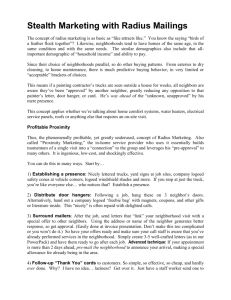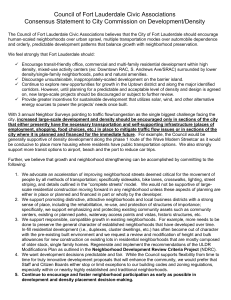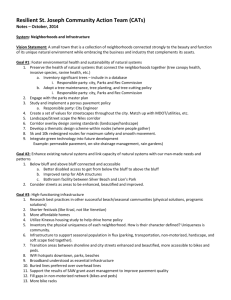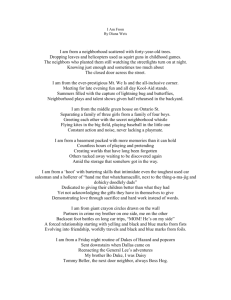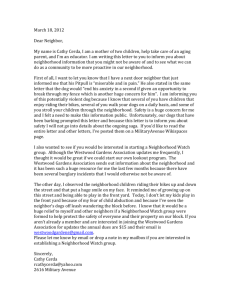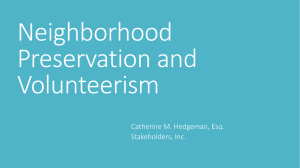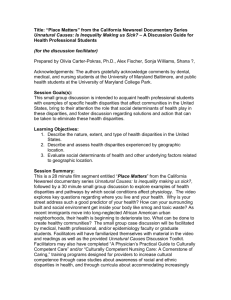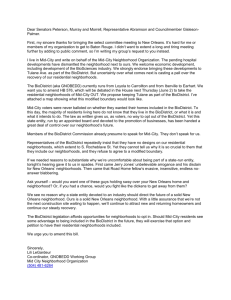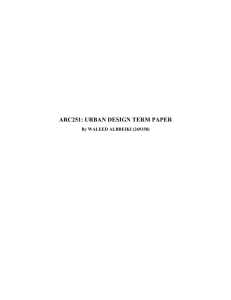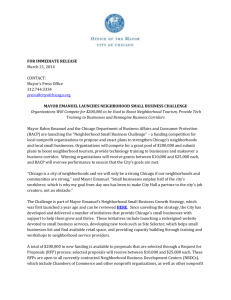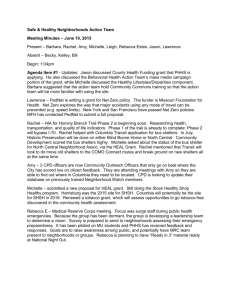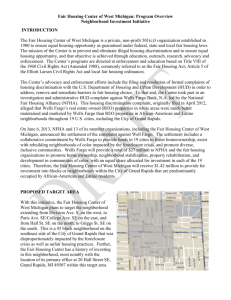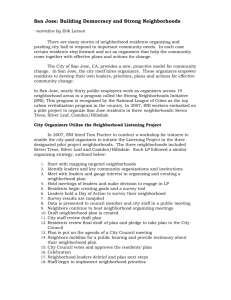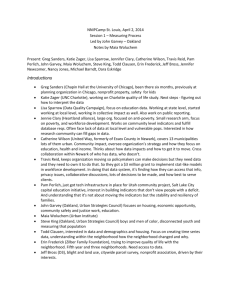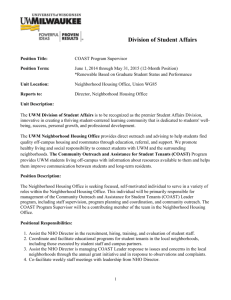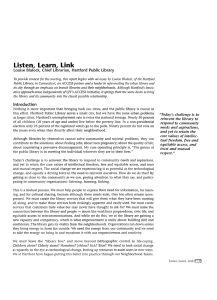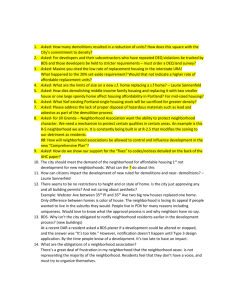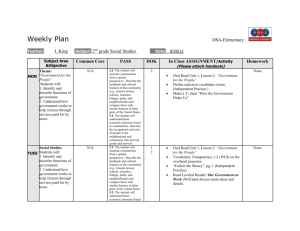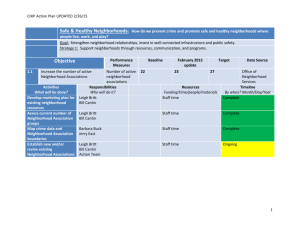Boston Neighborhoods Project
advertisement
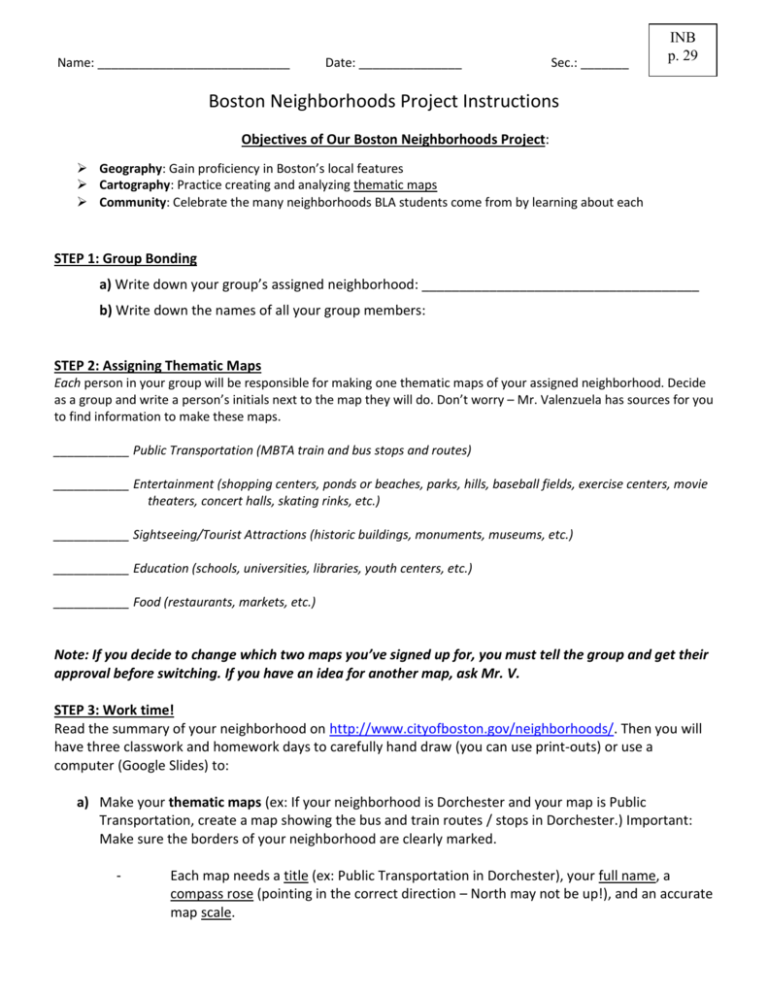
Name: ____________________________ Date: _______________ Sec.: _______ INB p. 29 Boston Neighborhoods Project Instructions Objectives of Our Boston Neighborhoods Project: Geography: Gain proficiency in Boston’s local features Cartography: Practice creating and analyzing thematic maps Community: Celebrate the many neighborhoods BLA students come from by learning about each STEP 1: Group Bonding a) Write down your group’s assigned neighborhood: _____________________________________ b) Write down the names of all your group members: STEP 2: Assigning Thematic Maps Each person in your group will be responsible for making one thematic maps of your assigned neighborhood. Decide as a group and write a person’s initials next to the map they will do. Don’t worry – Mr. Valenzuela has sources for you to find information to make these maps. ___________ Public Transportation (MBTA train and bus stops and routes) ___________ Entertainment (shopping centers, ponds or beaches, parks, hills, baseball fields, exercise centers, movie theaters, concert halls, skating rinks, etc.) ___________ Sightseeing/Tourist Attractions (historic buildings, monuments, museums, etc.) ___________ Education (schools, universities, libraries, youth centers, etc.) ___________ Food (restaurants, markets, etc.) Note: If you decide to change which two maps you’ve signed up for, you must tell the group and get their approval before switching. If you have an idea for another map, ask Mr. V. STEP 3: Work time! Read the summary of your neighborhood on http://www.cityofboston.gov/neighborhoods/. Then you will have three classwork and homework days to carefully hand draw (you can use print-outs) or use a computer (Google Slides) to: a) Make your thematic maps (ex: If your neighborhood is Dorchester and your map is Public Transportation, create a map showing the bus and train routes / stops in Dorchester.) Important: Make sure the borders of your neighborhood are clearly marked. - Each map needs a title (ex: Public Transportation in Dorchester), your full name, a compass rose (pointing in the correct direction – North may not be up!), and an accurate map scale. - Each map should have at least 5 things labeled (ex: On the Food map, label at least 5 places to eat, but preferably more). b) Under or attached to EACH map, get and write a quotation from someone who lives in that neighborhood on the topic of your map (ex: “I love that in Jamaica Plain you can walk almost anywhere and there are so many parks and playgrounds.” – Mr. Valenzuela) OR a quotation about the neighborhood from online, citing where it is from and who it is by. Please make sure that you only use respectful, appropriate, POSITIVE quotes. c) Under or attached to EACH map, write a Map Analysis Paragraph of at least 5 sentences that explains what the map and quotation reveal about the neighborhood. Describe your reactions to and inferences about the map, what questions it answers, and what questions or comments you still have. Please make sure your paragraph is positive, respectful, and appropriate. Do not stereotype or over-generalize. d) Color! In addition to making your maps colorful, you may use hand-drawn pictures, photographs, and more to add beauty and color to your maps! STEP 4: Presenting! On the presentation day, your entire group will stand in front of the class and use the Gooble Slides or the document camera to share and explain all your maps. You will be graded using the whole-school VERBAL COMMUNICATION RUBRIC: Exceeds Expectation (A+) Organization Delivery Relevance Presentation has a clear beginning, middle and end and includes smooth transitions. The presenter clearly meets the objective of the assignment and expertly and consistently communicates the focused purpose. The presenter consistently engages the audience with an audible, clear voice using appropriate intonation, eye contact and appropriate body language. The presenter expertly adapts pace for effect and utilizes the allotted time effectively. The presentation is complete, clear and accurate. The information is relevant and specific to the purpose and the evidence is utilized to support the argument. (e.g. step-by-step procedures, diagrams, graphs, etc.)


